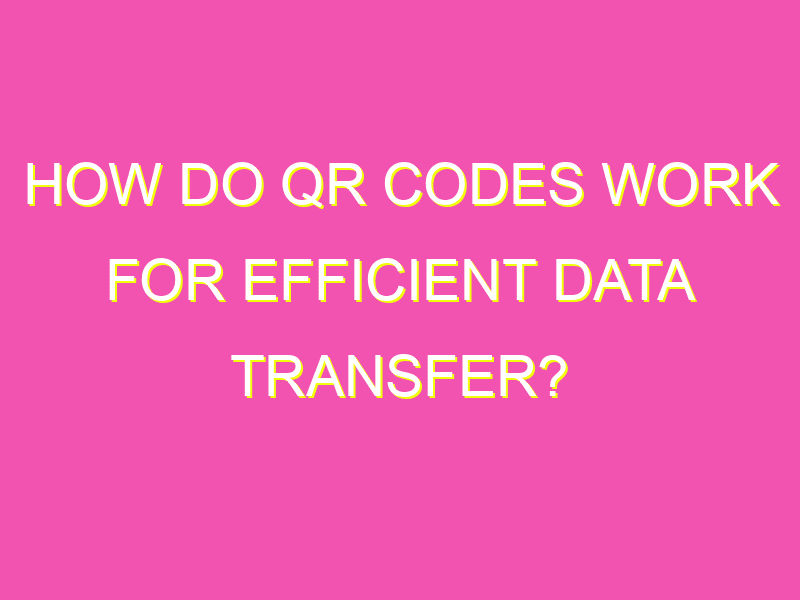QR codes are the tech-savvy way to share information in today’s world. These two-dimensional codes hold a ton of data and can be easily scanned and decoded with a smartphone or QR Code scanner. Wondering how they work? We’ve got you covered with these key points:
– You create the QR code by encoding information into a matrix pattern with special software.
– Your smartphone or scanner then reads the code with its camera and decodes the information.
– The information can be anything from URLs to images to payment options.
– Once the info is decoded, your smartphone processes it, opening a website or displaying a message, for example.
– Add some personality to your QR code with different colors and designs.
– Don’t worry if part of the code is damaged or missing, because QR codes can restore your information with error correction abilities.
In short, QR codes are a quick, hassle-free, and secure way to transport information. They’re customized, error-resistant, and easy to use. Get coding!
How Do QR Codes Work?
QR codes are becoming increasingly popular in today’s digital age. They are widely used for various purposes such as marketing, payments, and authentication. However, not everyone knows how QR codes work. In this article, we will delve into the details of QR codes and understand how they work.
Understanding QR codes
QR codes are two-dimensional barcodes that can be read by QR code scanners or smartphones. They store information in a matrix pattern of black and white squares. QR codes can store different types of information such as text, URLs, images, and more. The information is encoded in the QR code and can be decoded by a QR code scanner or smartphone.
The history of QR codes
QR codes were first developed by the Japanese company Denso Wave in 1994. They were initially used to track vehicles during the manufacturing process. However, QR codes gained widespread popularity in Japan in 2002 when they were used to link physical ads to mobile websites. Since then, QR codes have become popular worldwide.
QR code structure and encoding
QR codes consist of various elements that make up the code. The structure of a QR code includes a timing pattern, a finder pattern, an alignment pattern, and a version information. The encoding of the QR code involves converting the data into a matrix pattern. The matrix pattern consists of black and white squares that represent the data. The data is split into different modes such as numeric, alphanumeric, byte, and kanji, depending on the type of data being encoded.
QR code scanning
To scan a QR code, you need a QR code scanner app on your smartphone or a QR code scanner. The scanner reads the QR code by analyzing the matrix pattern of the code. The app or scanner decodes the data encoded in the matrix pattern and provides the information to the user. QR codes can be scanned at various angles and distances, making it easy to use.
Applications of QR codes
- Marketing – QR codes can be used in print ads, posters, and brochures to provide additional information to customers.
- Payments – QR codes can be used as a payment method by scanning the code and entering the payment details.
- Authentication – QR codes can be used as a security measure to provide access to sensitive information or authenticate a user.
- Inventory management – QR codes can be used to track inventory in warehouses and stores.
Security considerations with QR codes
QR codes can pose a security risk if not used properly. QR codes can be used to redirect users to malicious websites or download harmful software. Therefore, it is important to scan QR codes from trusted sources and to avoid scanning unknown QR codes.
The future of QR codes
The use of QR codes is expected to grow in the future. QR codes are becoming more popular due to their versatility and ease of use. Companies are finding new ways to integrate QR codes into their products and services. The use of QR codes is also expected to increase in the healthcare industry for tracking patient records and medication. With the evolution of technology, QR codes will continue to play a vital role in the digital world.





